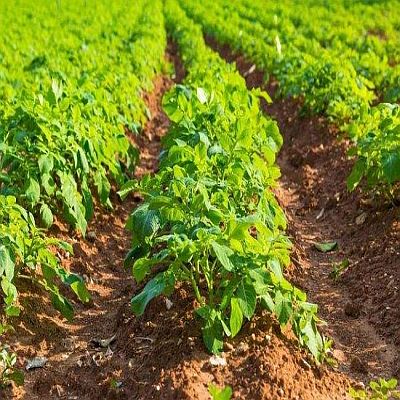Pseudomonas fluorescens ——Efficient, non-toxic, pollution-free and pollution-free
Pseudomonas fluorescens is an important plant rhizosphere growth promoting bacteria. It is one of the bacterial species with large population in the known beneficial microorganisms in the plant rhizosphere. The nutrient needs of the fungus are relatively simple, and it can quickly colonize around the plant roots by using most of the nutrients in the root exudates. Some of these strains can promote plant growth and control diseases, so they may be used for biological control of plant diseases. Pseudomonas fluorescens belongs to the rRNA I group fluorescent DNA homologous group of Pseudomonas. It is the most common microbial group in the plant rhizosphere. It has the characteristics of wide distribution, large quantity, simple nutritional needs, fast reproduction and strong competitive colonization. The mechanisms of action of Pseudomonas fluorescens include the action of antibiotics, the nutritional competition of ferriphagin for iron, effective rhizosphere colonization and so on. Pseudomonas fluorescens has a wide spectrum of bacteriostasis, has a good effect of promoting root growth, can prevent and inhibit the occurrence of soil borne diseases such as bacterial wilt and ginger blast of Solanaceae crops such as tomato, eggplant, pepper and tobacco, and has the functional characteristics of promoting seed germination, improving germination potential and seedling emergence rate. Pseudomonas fluorescens has strong adaptability. It can reproduce rapidly in soil and survive for a long time. It can effectively control a variety of diseases caused by bacterial wilt, Rhizoctonia solani, Fusarium and soft rot. Pseudomonas fluorescens can produce auxin and promote the growth of crop roots.
Characteristics of Pseudomonas fluorescens: the microbial living pesticide developed according to the biological control principle of plant virus can protect plants from the infection of pathogenic bacteria through the effective component Pseudomonas fluorescens antagonizing the nutritional competition and site occupation of bacteria, and can effectively inhibit the growth of pathogenic bacteria to achieve the purpose of disease prevention and treatment. In addition, Pseudomonas fluorescens can also produce auxin substances to promote the growth of crop roots and solve the problem of rotten roots. It can effectively control rotten seeds, dead seedlings, dry plants and white ears in the middle and late stage of wheat caused by diseases, has a good control effect on wheat total erosion, and can also treat root rot and sheath blight. It can also be used to control bacterial wilt of tomato, tobacco and other plants, promote germination and seedling, promote plant growth, and has the dual functions of disease prevention and bacterial fertilizer. It also has a certain effect on the control of cotton bacterial wilt, cotton Damping off disease, tobacco black shank and rice sheath rot.
The production of Pseudomonas fluorescens is an important factor for their inhibition of plant diseases. It can prevent a variety of soil borne diseases such as bacterial wilt, soft rot, wheat total erosion, bacterial wilt and Fusarium wilt, and reduce the occurrence of diseases.Pseudomonas fluorescens can also produce auxin substances, promote the growth of crop roots and solve the problem of rotten roots. In view of the sudden problem of total erosion in the main wheat producing areas in recent years, “total erosion net” combined with “fluorescein (Pseudomonas fluorescens)” seed dressing has achieved good results in preventing total erosion.

